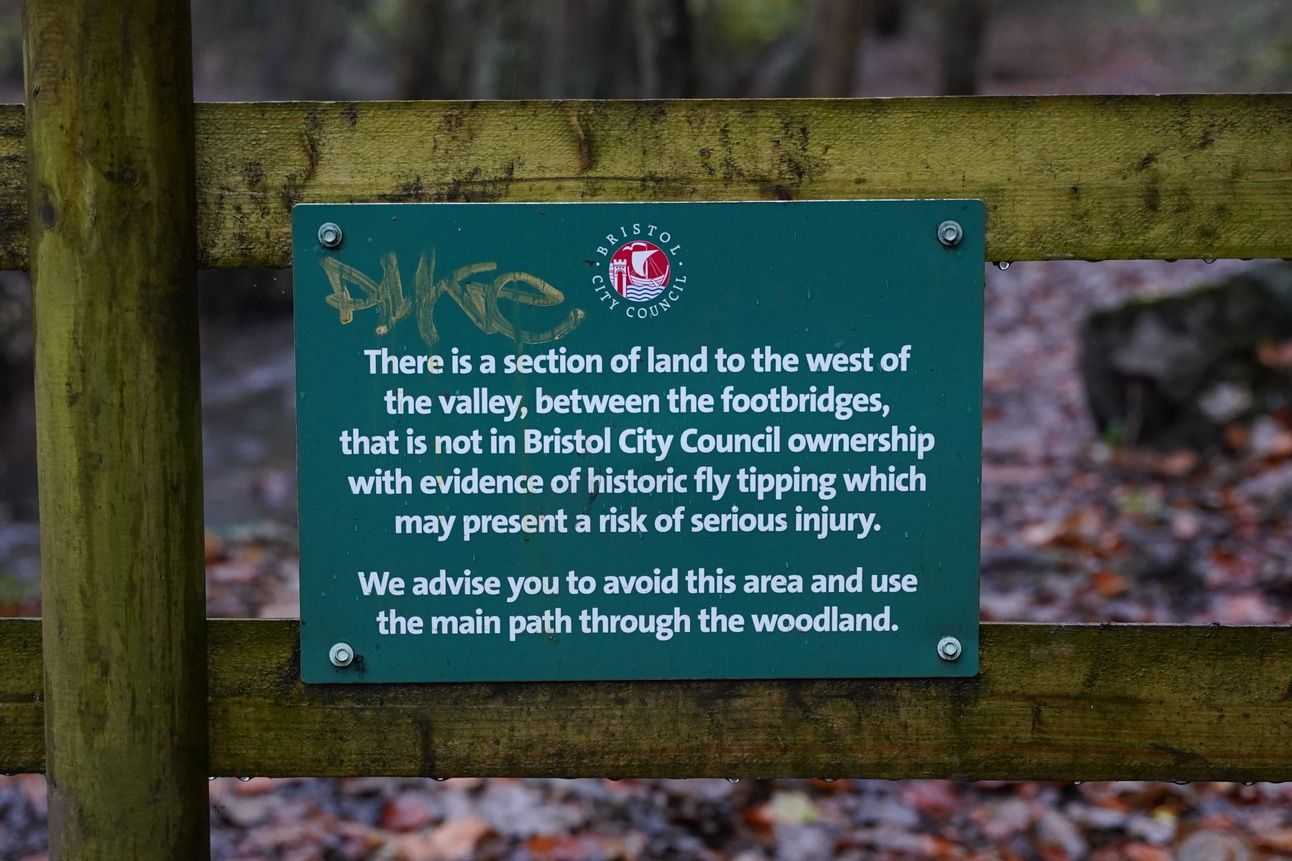
Rusty tar barrels and leaking tar next to Brislington Brook
Take a stroll through Nightingale Valley in South Bristol. Hopping over each muddy patch and with leaves crunching underfoot, a walk along Brislington Brook is more than pleasant.
People have used Nightingale Valley in Brislington for centuries. Historical records indicate that as early as the 13th century, villagers and pilgrims traversed the valley en route to the holy shrine of St. Anne's-in-the-Wood and a ferry across the River Avon.
Taking in the autumn palette and the ancient packhorse bridge, you may well miss the signs warning you away from the west bank of the brook.

The ancient packhorse bridge along the peaceful Brislington Brook
But, if you look closely at the water’s edge, you will see a number of rusty barrels and various detritus protruding out the ground, quite at odds with the natural environment.
This is the remains of a historic dumping ground, possibly a century old, and the centre of a local mystery for decades.

Tar has seeped from the rusty barrels and is polluting the wider area
There is no record of the area being a landfill site, but it is believed that tar barrels and other industrial waste were thrown down the valley from near Wick House around the 1920-50s.
Bristol City Council insisted that it did not own the land for decades, unlike the rest of Nightingale Valley. The land was purchased in 1924, but the owner did not register with the Land Registry. The property was then presumably passed down after the original owner died, and as such, the council could not trace the owner.

The steep sides of the valley and the dumping ground can be seen from the opposite side of Brislington Brook. At the top right is the coaching house and property.
That is until recently. The c.1790 coaching house just off Wick Road sold for £452,000 at auction on Wednesday 20 November. Along with it is the small slice of Nightingale Valley and the historic dumping ground.
It is unclear whether the new owner is aware of the landfill on their property or whether they will be forced to clear it in the future.

Left: A Google Maps image of the coaching house on Wick Road. Right: A 1930 aerial photograph showing the same area with a construction site atop the steep sided valley. (Credit: Google/Friends of Brislington Brook)
Andy McBride-Coogan is Chair of the Friends of Brislington Brook group.
“I first moved to the area around 1999 and demanded that something be done about it,” he told HANA News.
“But, anything could be in there. It’s an old, unauthorised landfill site. There are possibly hundreds of barrels and maybe hundreds of tonnes of stuff tipped down the hillside.”

Tar flowing into the Brislington Brook
Mr McBride-Coogan estimates that in order to dig up the area and remove the waste, it would likely involve heavy machinery and cost over £1 million. Other polluting items include bricks, fencing and broken glass.
No one knows for certain where the industrial waste came from, but Mr McBride-Coogan theorises that the tar barrels could be bitumen from the former Colthurst & Harding paintworks on Bath Road.
Other theories include that the barrels were dumped there by American GIs at the end of World War Two.

US Army parade along Wick Street, Brislington, 1945 (Credit: Bristol Archives)
There was some concern that the new owners could develop or fence off that part of the Nightingale Valley.
Mr McBride-Coogan said: “At the moment there is no Right of Way through Nightingale Valley. In theory, someone could fence it off.”
But, as Andy McBride-Coogan explained, a Right of Way application has been filed and the owners cannot develop the land whilst there is an active application.

The council was unable to trace the owner until the land went up for auction on Wednesday
Councillor Stephen Williams, Chair of the Public Health and Communities Committee, told HANA News: “The council’s Parks, Public Rights of Way and Regulatory teams continue to work with the local community including the Friends of Brislington Brook group to ensure a footpath route is retained through the area of privately owned land.
“We have provided guidance on how the community can apply for the footpath through the site to be designated as a Public Right of Way and have made a Tree Preservation Order to help protect the woodland.”
The council also stated that it continues to monitor the area of contaminated land and that the current advice is to leave the site undisturbed. It stated that the maintenance of the privately owned land, including the management of any contamination risk, is the owner's responsibility.
All images credited to Louis Inglis unless otherwise specified